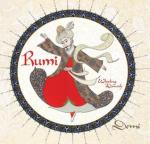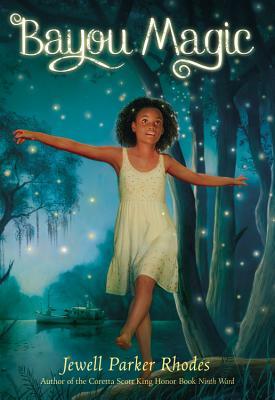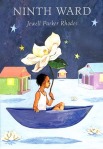Cinderella’s back in the spotlight, and that’s just fine with me. I haven’t seen the current Disney film, but I think its popularity provides a rich opportunity to expose children to some of the fascinating variants of the Ci nderella fairy tale (which, by the way, I would argue is not a story that focuses on the girl getting the guy as much as it offers an instructive contrast between helpful and harmful relationships among women).
nderella fairy tale (which, by the way, I would argue is not a story that focuses on the girl getting the guy as much as it offers an instructive contrast between helpful and harmful relationships among women).
Of the hundreds of Cinderella stories from around the world, one of the strangest comes from Russia. In Russian Fairy Tales, Aleksandr Afanas’ev includes several bizarre, sometimes meandering stories featuring the brave young Vasilisa and her encounters with the grotesque witch Baba Yaga. Like the French and German Cinderella, this stepdaughter’s kind nature contrasts with the cruelty of a stepmother and her nasty, spoiled stepsisters. In the Grimm brothers’ retelling, the maiden receives help after praying and pouring out her sorrows to her deceased mother. Similarly, Vasilisa’s mother helps her daughter even beyond the grave, only this time it comes in the form of a doll she bequeaths her before she dies. But don’t let the presence of a doll mislead you; this dark tale is neither for the faint of heart nor for the very young.
Somehow, it seems to me no version of this fairy tale is quite perfect, so when I shared this tale with third graders, I would use an illustrated version such as Marianna Mayer’s Baba Yaga and Vasilisa the Brave, with fine, dramatic paintings by Kinuko Y. Craft, and add or substitute a few details from other retellings, such as the one by Jane Yolen in her Favorite Folktales from around the World. 
Vasilisa feeds her doll and keeps her a secret, just as her mother has recommended. From Mayer’s version: “At night when Vasilisa was left to the darkness of her shabby quarters, she would pour out all her hopes and dreams to this small creature. The doll would listen, her eyes glowing like embers; and quietly, so that no one else could hear, she would whisper loving words of comfort and advice.” Isn’t that lovely? There’s a perfect symmetry here, with Vasilisa learning from and enacting the power and reciprocity of love and respect; she takes care of the doll, and the doll does likewise — just as it should be in healthy, loving relationships.
The drama intensifies when the stepmother, who happens to be a witch, demands that Vasilisa go to the other end of the dark forest to borrow a light from none other than Baba Yaga, who is known to eat humans. At the end of arduous journey, the girl confronts a fearsome sight: “a high fence made of bleached bones, and on each fencepost a hollow-eyed skull sat glaring. The gate was also made of bones, the latch was a sharp-toothed mouth, and the bolt was a skeleton’s hand. On the other side of the fence stood Baba Yaga’s hut on its rickety stilts of bones.”
When Baba Yaga sweeps down in her mortar, Vasilisa bows respectfully and states her purpose. The crafty witch reveals that she knows her stepmother and stepsisters and says, “You shall have your light and you may even live to use it. … But first you must live here and work for me.”
Then, in fine fairy-tale tradition, our hero is presented with impossible tasks, which, of course, will require the services of the magic doll. The nurturing doll tells Vasilisa to go to sleep and not to fret. Here’s where I use the refrain in Jane Yolen’s retelling: “Morning is wiser than the evening.”
After Vasilisa accomplishes the irrational, impossible feats dictated by Baba Yaga (separating wheat from chaff and then dust from poppy seeds?!), the witch asks the girl, “Just how did you succeed in doing all the many tasks I set for you?”
Without revealing the presence of her doll, Vasilisa tells the truth: “By my mother’s love.” Now, you might prefer Yolen’s phrasing: “I am helped by the blessing of my mother.” I think it makes more sense for Baba Yaga to be horrified at having a blessed one in her house, but can decide for yourself, based on your audience and on how much time you have to discuss this.
At this point, Baba Yaga pushes Vasilisa out of her house and yard and then offers her much more than she requested. She takes a skull with burning eyes from the fence, puts it on a stick, and gives it to the girl.
Vasilisa arrives home to find her stepmother and stepsisters sitting in darkness. The women rise to take the glowing skull, whose fiery gaze follows first the stepmother … then the stepsisters, burning them to cinders.
In the morning, Vasilisa buries the skull, abandons the house, and manages to find shelter with a kind old woman in town. Again, Vasilisa’s kindness and resourcefulness, aided by her attentive doll, will work to transform the young woman’s life. She weaves the finest linen, which the old woman takes to the tsar. Wishing to reward the needlewoman who has made such remarkable shirts, the tsar arrives at the home of the old woman and Vasilisa and, yes, falls madly in love with our protagonist. Yet, tellingly, to the end of her days, Vasilisa keeps the doll that has helped her so much.
This courageous Cinderella has shown herself to be no passive young lady waiting for someone to rescue her. As Elizabeth Winthrop points out in the end note of her Vasilissa the Beautiful, this “is a tale peopled by women. From Vasilissa’s mother and her deathbed blessing, to the wicked stepmother, to the wily old witch, Baba Yaga, to Vasilissa’s adopted mother, even to the little doll–it is women who challenge Vasilissa to grow, who sustain her in her troubles, and who rejoice with her in her final triumph.”
Works Cited and Recommendations for Further Reading
Forrester, Sibelan E. S, Helena Goscilo, Martin Skoro, and Jack Zipes. Baba Yaga: The Wild Witch of the East in Russian Fairy Tales. , 2013. Internet resource.
Grimm, Jacob and Wilhelm. The Complete Fairy Tales of the Brothers Grimm. Jack Zipes, translator. New York: Bantam, 1987.
Lewis, Naomi, and Jo Worth. Classic Fairy Tales to Read Aloud. Boston: Kingfisher/Houghton Mifflin Co, 1998.
Mayer, Marianna, and Kinuko Craft. Baba Yaga and Vasilisa the Brave. New York: Morrow Junior Books, 1994.
Riordan, James, and Andrew Breakspeare. Russian Folk-Tales. Oxford: Oxford University Press, 2000.
Sierra, Judy. Cinderella. Illustrated by Joanne Caroselli. The Oryx Multicultural Folktale Series. Phoenix, Arizona: Oryx Press, 1992.
Winthrop, Elizabeth. Vasilissa the Beautiful. Illustrated by Alexander Koshkin. New York: Harper-Collins, 1991.
Yolen, Jane. Favorite Folktales from Around the World. New York: Pantheon Books, 2008.
And look for these related stories:

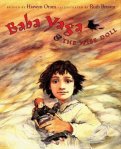

(Note: Cinderella image at top of page comes from “Artists and Images,” http://d.lib.rochester.edu/cinderella/artists )
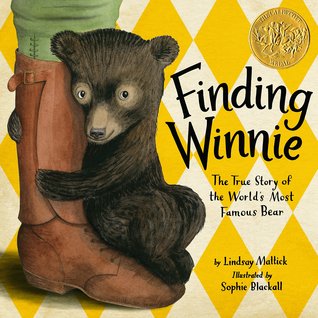 The wide-ranging artwork of contemporary children’s book illustrators earns the spotlight at an impressive exhibit at Brandywine River Museum of Art in Chadds Ford, PA.
The wide-ranging artwork of contemporary children’s book illustrators earns the spotlight at an impressive exhibit at Brandywine River Museum of Art in Chadds Ford, PA.



 ou will remember it. It’s become part of my Christmas tradition after hearing it on a local college radio station in ’84. In his beautiful picture book Christmas in the Trenches, McCutcheon has adapted his touching song about the Christmas Truce of 1914 for older children. The story’s narrator is an elderly man named Francis, who tells his grandchildren of the unique Christmas he experienced as a young soldier in WWI. The soldiers in the trenches were bored and homesick on Christmas Eve. Suddenly, they heard German voices singing Christmas carols. The English soldiers decided to join in on “Silent Night,” an act that inspired a German soldier to cross No Man’s Land with a white flag and a Christmas tree. The two sides called a temporary, informal truce. Sorensen’s atmospheric oil paintings highlight the unexpected night of peace with a double-page spread showing the soldiers and the battlefield. Included are an author’s note, music notation, and a CD with the title song and “Silent Night/Stille Nacht,” along with a reading of the story. This sensitive picture book won a 2007 Notable Social Studies Trade Books for Young People.
ou will remember it. It’s become part of my Christmas tradition after hearing it on a local college radio station in ’84. In his beautiful picture book Christmas in the Trenches, McCutcheon has adapted his touching song about the Christmas Truce of 1914 for older children. The story’s narrator is an elderly man named Francis, who tells his grandchildren of the unique Christmas he experienced as a young soldier in WWI. The soldiers in the trenches were bored and homesick on Christmas Eve. Suddenly, they heard German voices singing Christmas carols. The English soldiers decided to join in on “Silent Night,” an act that inspired a German soldier to cross No Man’s Land with a white flag and a Christmas tree. The two sides called a temporary, informal truce. Sorensen’s atmospheric oil paintings highlight the unexpected night of peace with a double-page spread showing the soldiers and the battlefield. Included are an author’s note, music notation, and a CD with the title song and “Silent Night/Stille Nacht,” along with a reading of the story. This sensitive picture book won a 2007 Notable Social Studies Trade Books for Young People.
